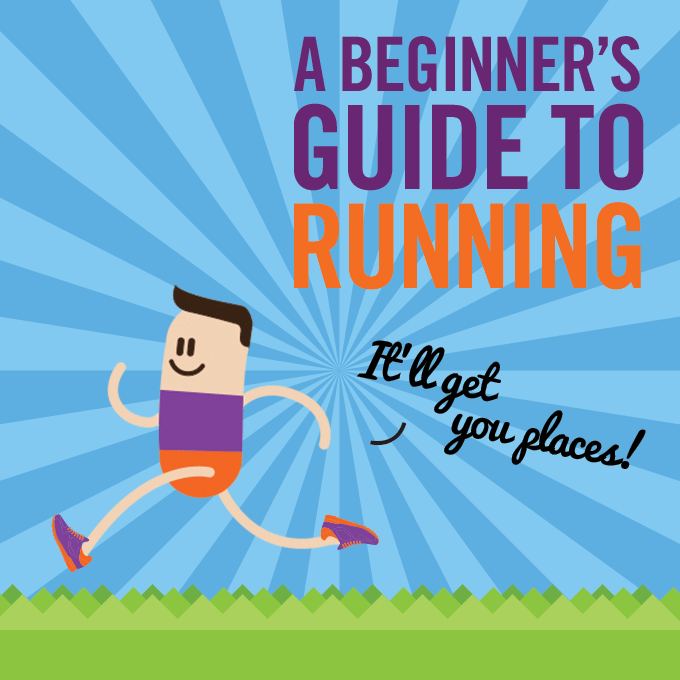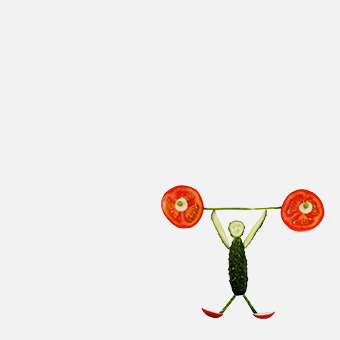Every April, approximately 36,000 people run through the capital, taking part in the London Marathon. The 26.2-mile track takes its first leg through Greenwich and goes past some of London’s top landmarks before coming to an end just outside Buckingham Palace. Black toenails, blisters, chaffing… You may have seen some of the war wounds that marathon runners carry both during training and the event itself. But imagine the satisfaction that must be felt when crossing the finish line. It must make all the pain and commitment worth it.
Does marathon fever make you feel like strapping on some trainers and hitting the road? Here is our step-by-step guide to becoming a runner.
Run, baby, run
The benefits of running stretch far beyond just burning calories (you burn roughly 100 calories per mile, in case you were wondering). Because you use all parts of your body when you run, the fat that you burn, inch loss as well as the muscle toning, comes from all areas too. On the inside, running strengthens your heart, lowering the risk of blood clots, heart attacks, and strokes, whilst increasing your lung capacity and boosting your immune system.
As well as improvements to your physical health, running has also been shown to aid your mental health too. It can eliminate feelings of stress, which will in turn have a positive effect on your sleep, rid you of depressive tendencies, and make you feel more confident as you achieve your goals.
The starting line
The most important thing to remember when starting to run is to focus on distance, and not the time it takes. Think tortoise and the hare; starting out slow and steady means you are much more likely to succeed in the long run (literally). Do note, however, that focusing on running for a consistent amount of time is a different thing. The danger lies in jumping into too quick a pace too soon. Few people do not like listening to music but most people said that doing so helps with motivation.
It has been proven time and time again, in both health and fitness industries alike, that you are more likely to stick to a new regime if you have a solid goal to work towards. This could take the form of a personal best, but choosing a reasonable date and event is a great option too. If you’re stuck on finding something, how about a 5k run, as demonstrated in the training app, Coach to 5k? This free app from the NHS aims to get users running for a full half an hour over a 10-week course, which on average equates to the distance of a 5-kilometer run. Why not search online for when your local charity is hosting its next 5k, and start training? Gaining sponsorship and raising money for a cause will help you stay committed as well.
Walking before you can run
It may sound elementary, but before stepping out and into your first run, it would be a good idea to practice some walking first. We aren’t talking about an amble to the bus stop whilst chatting to your mates on the phone. Take the time to give proper, focused walking a go. Walking at a brisk pace is described as a speed where you can feel your heart beating, but you are still able to hold a conversation.
Treadmill vs. The Big Outdoors
Whether you’re starting outside or on a treadmill at the gym, both are suitable for getting into running. There are, however, some big differences between the two types. Running on a treadmill can have its advantages; being indoors of course means that you don’t need to tackle the issues of weather or wind resistance, which will not only influence your enjoyment and performance, but also what you’re wearing and what you need to carry. If you don’t have a smart phone with a tracking app, the built in monitors on treadmills are useful for keeping record of the distance and length of time that you have been running for.
Treadmills also have padded platforms, meaning that running on them is easier on your joints than running on pavement or any other hard ground. But by running inside, you lose the factors brought to you by the outdoors, like the sight of passers by, or the greenery of a park, which can bring excitement, enjoyment and encouragement to a run. And if you get bored of one view, you can simply change it up for another! Both serve their purpose, and although you may use a treadmill as a good back up when you’re unable to run outside, you may also choose to run outside when you can’t make it to the gym. You can set your treadmill to a 1% incline to help to mimic the pressure of real ground, but it is important not to restrict yourself to a machine, so as to allow your body to adapt to both settings.
Hit the road, Jack
If you are choosing to run outside, you will next have to think about where you are going to run from and to. Grass or dirt paths are the best to run on, as they are both firm enough to support you and at the same time shock absorbent. Sandy beaches are known for being the hardest workout for your legs, so perhaps avoiding this option as a beginner. Although running through green fields and beaches may sound like paradise, we sadly don’t all have one near to us. Concrete isn’t ideal for running, but sometimes it is our only option. It also gives the advantage of providing a straight route already paved for you to follow. Wherever you decide to set off from, the most important thing is that you are safe and able to relax, focusing solely on your run.

Map it out
Once you’ve decided where to run, you’ve got to decide on when. This will include a number of different factors, like how many times a week, what days those will be, and what time of the day too. Make a written plan with exact times to ensure that no other event in your diary will interfere with your training. The great thing about running is that there is no set time for completing a session, so even if you only have time for a short run, you will still feel the benefits.
Prepare for take off and landing
Like any workout, it is important to both warm up and cool down when running, to avoid injury. Each should last around five to ten minutes, depending on how physical your activity is likely to be. In both cases, this should include brisk walking and stretching. Particular areas to target when stretching out would be the hips, thighs, hamstrings, calves, chest and shoulders. Although you may be tempted as you improve, resist the urge to run faster than you’re really able to. You’ll know if your pace is too fast as you’ll find you’re out of breath and probably in pain before too long. Did you know that a stitch is formed when your stomach bumps into your other organs, according to one theory? Others suggest it might be due to the over stretching of the ligament that connects the liver and diaphragm. To prevent these terrible side pains, make sure to stretch appropriately, breath steadily, and don’t go out running on too full a stomach.
Grab a partner
If you’re new to running and are looking for encouragement, you may be interested in exploring the idea of group running, or running with a companion. Many parks offer sessions for people to sign up to, where big groups run together. Having a running coach would be a good way of boosting your commitment, and checking out other running styles and techniques too. If you do decide to run with a friend, you may want to check a few compatibility areas, for example, are you at a similar running level? Do you listen to music, are happy to chat, or prefer to stay quiet?
Look the part
Running is one of the cheapest exercises that you can partake in. All you need is an open road… and a good pair of shoes. Not only will the right pair of trainers prevent you from hurting yourself, they can also improve your performance, keeping you well balanced, supported and comfortable so you’re able to run for longer. Make sure to consult a specialist when buying running shoes in a store and that they understand what level you are at, and what kind of running you will be doing in the future. Barefoot running has also been known to enhance training, but perhaps this is better left until your confidence has built up a little…
As for your outfit, comfort is again the most important factor. This will be dependent of course on the weather, and one fitness clothing manufacturer suggests dressing for weather that is between 15 and 20°F warmer that it actually is, to avoid overheating when you’re out. Synthetic clothing made with wicking will draw sweat away from your body, and items with mesh panels will also help to keep you cool. Wear reflective clothing when running at night to make sure to be seen by vehicles and other pedestrians around you. If you’re a woman running on a treadmill or outside, you’ll also want to invest in a good sports bra to restrict, well, bouncing!
Diet
As with most workout regimes, your running ability will benefit from sticking to a balanced diet. These are the particular areas to look out for:
Protein
After running, your muscles and tendons will need to repair, and the more you run, the more repair will be needed. Protein will aid this process, so make sure you’re getting enough by eating lean meat, eggs, nuts or tofu.
Complex carbohydrates
These aren’t as convoluted as they sound. Carbohydrates are known for giving energy levels a boost, but some carbohydrates, which release sugars quickly, will cause a peak and then crash in your sugar levels. Instead, opt for complex carbs like wholegrains, wholemeal breads and potatoes, which will keep your energy steady and sustained.
Fat
Yes, fat! We all need a certain amount of fat in our diet, but make sure it’s the right kind. Look for monounsaturated fats found in olive oil, flaxseed oil and oily foods like avocados to best aid your running.
Hydration
A big danger when running is dehydration. Whatever your speed or ability, make sure you’re drinking enough water before, during and after your run. The general rule is eight cups (about two litres) a day.
Reward yourself
As well as a goal to work towards, everyone is motivated by a reward at the end of the tunnel. Why not make it beneficial to your activity, so as to encourage you to continue with your newfound love of running? Treat yourself to s new piece of workout clothing, for example, or perhaps a well-deserved sports massage? Just make sure that it’s something to look forward to, and that will make the hard work worth it.
With all these factors taken on board, you’re sure to be putting your best foot forward when stepping out on your first run. Nexy year’s London Marathon, anyone?


















